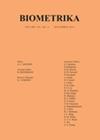用于群落探测的网络调整协变量
IF 2.4
2区 数学
Q2 BIOLOGY
引用次数: 0
摘要
社群检测是网络分析中的一项重要任务,通过纳入主体层面的信息(即协变量),可以大大提高检测效率。现有的方法已经证明了在低度节点上使用协变量的有效性,但很少讨论社群密度水平存在显著差异的情况,即多尺度网络。在本文中,我们引入了一种新方法,通过构建网络调整协变量来应对这一挑战,该方法利用了网络连接和协变量,并为每个节点设定了特定于节点的权重。该权重无需调整参数即可计算。我们提出了新的理论结果,说明在带有协变量的度校正随机块模型下,我们的方法具有很强的一致性,即使在存在规范错误和多个稀疏群落的情况下也是如此。此外,我们还为同时存在网络和协变量时的群落检测问题建立了一般下界,并表明我们的方法在连接强度达到一个常数因子时是最优的。在模拟和 LastFM 应用程序用户网络中,我们的方法优于现有方法。然后,我们在统计出版物引用网络中将我们的方法与其他方法进行了比较,在该网络中,有 30% 的节点是孤立的,我们的方法产生了合理而均衡的结果。本文章由计算机程序翻译,如有差异,请以英文原文为准。
Network-adjusted covariates for community detection
Community detection is a crucial task in network analysis that can be significantly improved by incorporating subject-level information, i.e., covariates. Existing methods have shown the effectiveness of using covariates on the low-degree nodes, but rarely discuss the case where communities have significantly different density levels, i.e. multiscale networks. In this paper, we introduce a novel method that addresses this challenge by constructing network-adjusted covariates, which leverage the network connections and covariates with a node-specific weight for each node. This weight can be calculated without tuning parameters. We present novel theoretical results on the strong consistency of our method under degree-corrected stochastic blockmodels with covariates, even in the presence of misspecification and multiple sparse communities. Additionally, we establish a general lower bound for the community detection problem when both network and covariates are present, and it shows our method is optimal for connection intensity up to a constant factor. Our method outperforms existing approaches in simulations and a LastFM app user network. We then compare our method with others on a statistics publication citation network where 30% of nodes are isolated, and our method produces reasonable and balanced results.
求助全文
通过发布文献求助,成功后即可免费获取论文全文。
去求助
来源期刊

Biometrika
生物-生物学
CiteScore
5.50
自引率
3.70%
发文量
56
审稿时长
6-12 weeks
期刊介绍:
Biometrika is primarily a journal of statistics in which emphasis is placed on papers containing original theoretical contributions of direct or potential value in applications. From time to time, papers in bordering fields are also published.
 求助内容:
求助内容: 应助结果提醒方式:
应助结果提醒方式:


